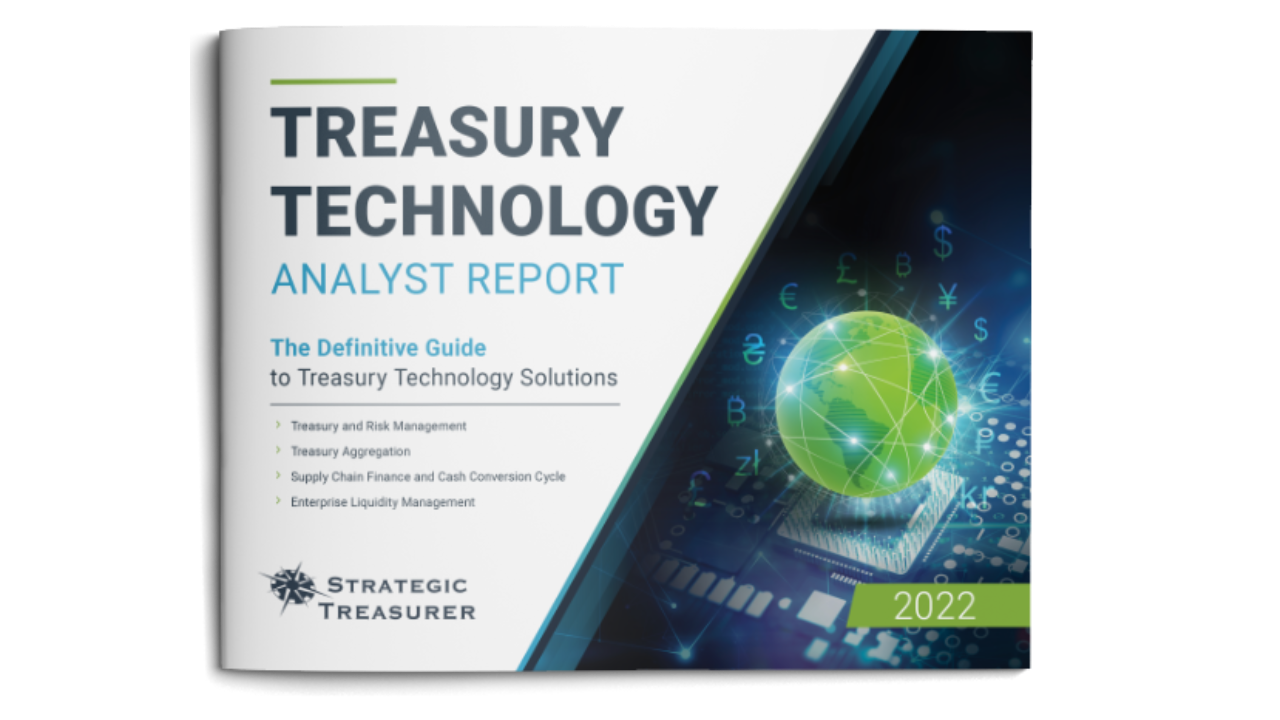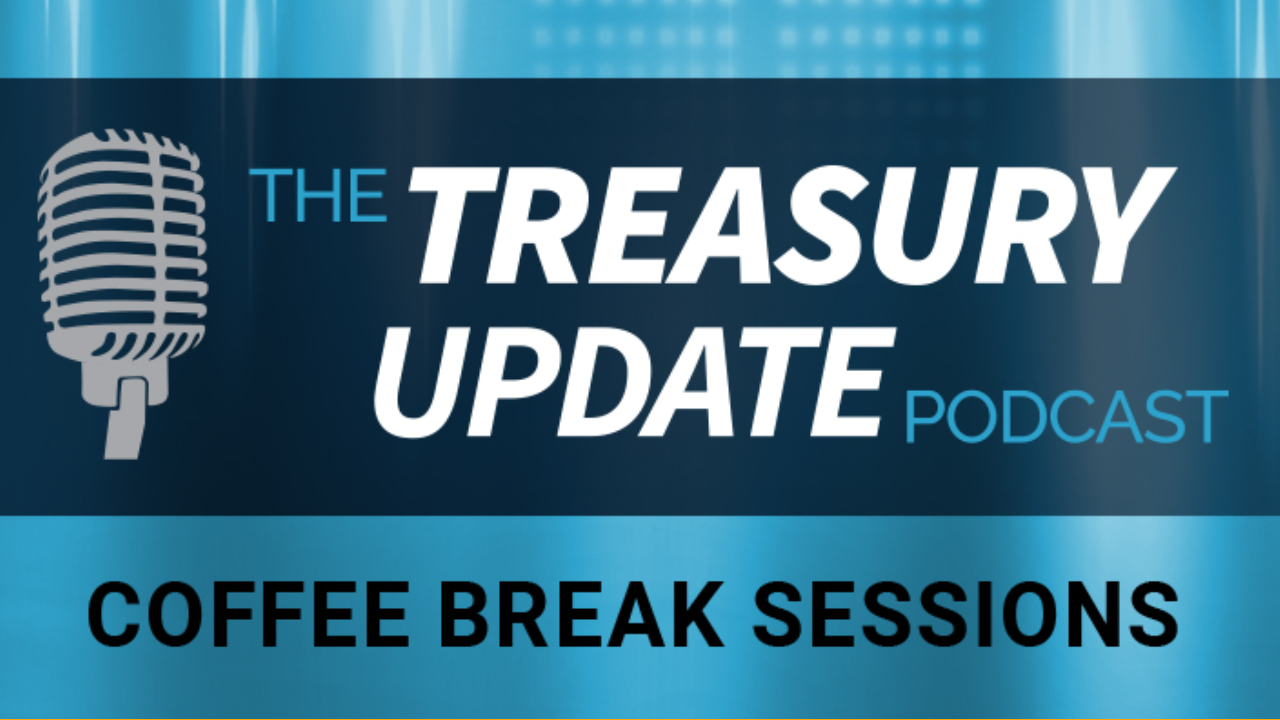
Session 78
Coffee Break Session:
What Is Common Stock?
Host Jason Campbell catches up with Strategic Treasurer’s Senior Advisor Paul Galloway to discuss common stock. They discuss why companies issue common stock, second offerings, and treasury stock and talk about how it’s used. Listen in and learn a little bit about common stock.
Host:
Jason Campbell, Strategic Treasurer


Speaker:
Paul Galloway, Strategic Treasurer


Episode Transcription - (Coffee Break Session Series) - Episode 78 - What Is Common Stock?
Jason Campbell 00:03
Welcome to the Treasury Update Podcast, Coffee Break Sessions presented by Strategic Treasurer covering foundational topics and core treasury issues. And about the same amount of time it takes you to drink your cup of coffee. I’ll be your host, Jason Campbell, business development leader as Strategic Treasurer. Chatting with me today is my guest, Paul Galloway, Senior Advisor at Strategic Treasurer. Paul, welcome back. Glad to have you.
Paul Galloway 00:27
Thanks for having me back, Jason.
Jason Campbell 00:29
I know the last session that we did, we were you know, kind of broke in the new year with the US economy. And you give us some wonderful insights about the 2023 outlook or as you know, some of your perspectives on things going on from 2022. And what to look into 2023. But I want to go back even one session further. And that last one we did at the end of 22. Around we were talking about stocks, and I wanted to bring it back in because I thought it was kind of important, as we talked about stocks in general, I think there’s you know, I want to split it apart between two different types of stocks. And in this session, one in particular around common stock. So I think this is where we want to get a little bit further of an understanding for our audience about what is common stock. So I’m going to pose that question to you and let you take an educate, educate me in the audience around common stock.
Paul Galloway 01:17
Yeah, Jason, when you think about publicly traded companies, and anyone that is investing in a 401 K has a position and common stock through their allocation of investments. And so you might not see it directly. Within your money fund managers, you have some level or some amount of common stock that will be in those funds, as long as it’s not an all bond fund. So common stock is something that you would typically have for any company that is publicly traded. So a publicly traded company, you’ll hear announcements from time to time, a company that is issuing their IPO, an IPO is an initial public offering. They’re a private company that’s looking to become a publicly traded company. And so privately owned companies will have stock in the company. So the be a set of owners, you know, typically your your founders, key executives are part of the organization will have some type of stock ownership is not the common stock that people were used to seeing in the publicly traded markets, but it’s still stock, it’s a representation of ownership in the business. That means that anybody in a private company when they need to raise capital, or there needs to be cash infusion into the business, they’re doing one of two things, they’re either putting in their own personal capital, which, if they’re a startup business, or, you know, relatively new and young, they’re probably pouring their own capital into it, because winners aren’t going to give them money on a startup, but it is a grow and develop and they have products and services that generate cash flow, they’re able to go to banks to get more capital, it gets to a point where they’re saying, Well, you know what, we can’t get any additional capital to grow the business, in order to grow the business, they’ll do what’s called an initial public offering to capitalize the business for future growth so that they can get bigger. It also offers opportunity for people that were owners on the private side when the business was private before went public, to cash in on on some of that. So they’ll be able to get some value out of the business, it doesn’t mean that they sell off all their shares after an IPO. That’s that’s not what happens. And certainly the market doesn’t want to see these folks selling off their shares. Because it would make them think, Well, geez, maybe there’s something wrong with this company. And there shouldn’t have been a public offering, but common stock. In the most general sense, our most widely known sense is an issuance of equity shares and accompany through a publicly traded platform.
Jason Campbell 04:15
And I think you kind of already answered my next question, which was going to be you know, why a company would want to issue common stock, and I think you hit on it about you know, it’s another way for them to raise capital. You know, we talked about the the initial public offering that IPO. So I know there’s some grumbling also, too, about what a secondary offering is. So can you dive in a little bit and just kind of talk to us about what exactly is involved with a second offering?
Paul Galloway 04:40
That’s a great question. From time to time, you’ll see companies that will go out there and they’ll do a secondary offering what’s called a secondary offering. Basically what that is, is they’re looking to do another equity raise of capital for their business. There’s various reasons as to why an organization might do that they’ve already got stock that’s publicly traded out in the market, but they’ve got some very specific reasons or rationale as to why they’re doing it. It may be that, you know, they need to right size, the balance sheet, meaning, you know, it’s not quite the way they want it to get more debt than they want. And so their debt to equity ratio is not where it needs to be. They don’t want to extinguish debt to bring it down. They want to infuse a capital so that they can do the things that want to do develop new products, you know, continue to expand the business or as through acquisition or other things. So it’s a way for them to recapitalize the balance sheet put capital, in coffers, so that they can execute on things that want to do. Another reason, a good example of why a secondary offering might happen. In the scenario, the Great Recession, oh, eight, no nine, the organization that worked for at the time, we were responsible for the firm’s capital management, everybody was hurtin at that point. And we were looking at all kinds of different opportunities to, to raise capital, I’d ran all kinds of different analyses for all kinds of different debt funding vehicles, private public government, and the whatnot. But the other thing we looked at at the same time was, hey, do we do a secondary offering. And ultimately, what we did is we came out the market, the first ones in the industry, we were in to come out with a debt offering, we did two different tranches, 510 years. But then we did two weeks later, we do what’s called a follow on offering or a secondary offering for equity. And, you know, we raised $2 billion, between the two it was a low is like 1.1 billion for the secondary common stock offering, it was really good thing to do, because it kept our balance sheet in, in the position that we would need it to be in from a rating agency standpoint. And also from a cost of capital standpoint, given the current environment, which was not good enough put capital in the coffers. And that allowed us to stop focusing on our balance sheet and have a Wall Street worried about balance sheet because we had $2 billion on the books that we could go out and start focusing on our business and growing our business and doing all the things that we do real well with products. So secondary offerings can also be for an event like that.
Jason Campbell 07:30
So some interesting pieces as you have an initial public offering, then you got opportunities for a second offering. So one of the other pieces into common stock that I want to touch a little bit on here is around treasury stock. In more play, just kind of give us a brief description of treasury stock as it relates to overall theme of common stock and then ultimately, how is it used.
Paul Galloway 07:51
In a couple of our previous podcasts we talked about, you know the management of your return on return of capital. So when you think of perspective of return on capital, instead of doing common dividends or special dividend or ex ordinary dividend, you go out and you repurchase shares in the open market. So we talked about that share repurchase program, every time that a company goes out and enters the market in a share repurchase program. Those shares that are brought back in or re acquired are considered treasury stock, and that’s what the treasury stock is.
Jason Campbell 08:29
Well, that was a quick, awesome, well described description there on treasury stocks, I really do appreciate it. Well, Paul, as always, thank you for joining me today. Really appreciate it. For our listeners, please be sure to tune in every first and third Thursday of the month for a new episode of the Coffee Break Session. As usual. If you have any questions, comments or feedback, please send us a note at podcast@StrategicTreasurer.com. Until next time, take care.
Announcer 08:55
This podcast is provided for informational purposes only, and statements made by Strategic Treasurer LLC on this podcast are not intended as legal, business, consulting, or tax advice. For more information, visit and bookmark StrategicTreasurer.com.
- Treasury & Risk Management Systems
- Treasury Aggregators
- Supply Chain Finance & Cash Conversion Cycle
- Liquidity Enterprise Management




